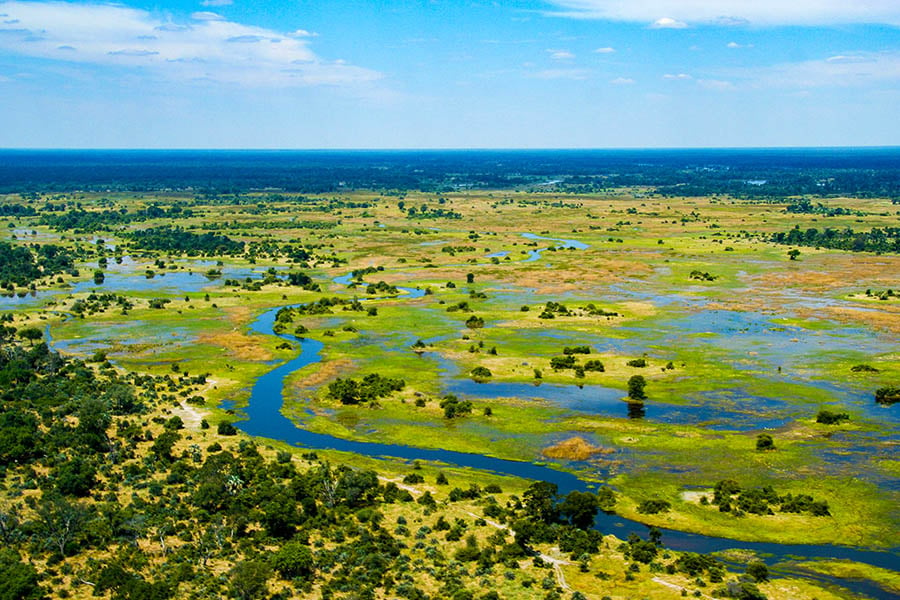Untouched beauty: my unforgettable Pakistan trip
When I was offered the chance to visit Pakistan in May this year, I grabbed this opportunity with both hands!
I couldn’t wait to visit this fascinating and seldom-visited country, with its beautiful landscape and almost total lack of tourists. I had previously heard incredible stories from fellow travellers who had visited Pakistan, so I was really excited to discover the destination for myself.
Many people who haven’t been to Pakistan perceive it as a dangerous country, based on the negative stories we hear from our media news outlets in the West. I wanted to experience Pakistan’s incredible hospitality and stunning scenery first-hand and make my own decision about this country. I set off with an open mind and an appetite for adventure.

Media myths versus amazing realities
Before I departed for Pakistan, I was met with mixed responses, ranging from ‘Wow, that should be an incredible adventure’ to ‘Be very careful'. Many people were concerned for my safety, purely because of the negative press that Pakistan has received in the past. I'm so glad that I didn't let this negativity affect me because this was truly the trip of a lifetime. It's a spectacular and completely misunderstood destination that I cannot recommend highly enough.
Pakistan has come a long way since its issues with the borders of Afghanistan over 10 years ago. During the two weeks that I spent in Pakistan, I did not once feel threatened or unsafe. Wherever I went, I was greeted with a friendly smile. In fact, I received the best hospitality from any country I have visited in the world so far!

Arriving in Islamabad
I started my trip by flying direct from London Gatwick to Islamabad, which takes 7hrs 30 minutes. I spent my first night in Islamabad, which was a totally different experience from what I expected for a South Asian capital city. The city was purposely built in 1960 to be the new capital of Pakistan. The streets are very clean with manicured gardens, and it was not too busy when compared to other capital cities in the region.

Flying to Gilgit
As the propellered flight climbed out of Islamabad where the terrain is sand/desert, it wasn’t long before we started to witness the stunning scenery of Northern Pakistan’s snow-capped mountain ranges. If you get the opportunity to travel on this flight, sit on the righthand side of the aircraft, as this has the best views of the mountain ranges as you fly north to Gilgit.
This has to be one of the most scenic flight journeys I have ever experienced. As we got closer to Gilgit, we also got to see the famous Nanga Parbat. Called “King of the Mountains”, it’s the ninth highest mountain on Earth.
The flight into Gilgit is also unique because the plane flies between the mountains to land at the airport. It only operates if the weather is perfect and requires extreme skill from experienced pilots to fly into such mountainous terrain. If this flight is not operating, your itinerary will be changed to fly into Skardu, which is a bigger airport nearby.

Getting ready for Rakaposhi
After we collected our baggage, we were transferred by road to Minapin for a 1 night stay before commencing our overnight trek to Rakaposhi Base Camp for the night. We stocked up on amazing dried fruit and nuts from the local shops in Minapin, which had plenty to offer. We made sure to pack dried apricots to help with any altitude sickness during the trek.
Rakaposhi Base Camp is an 8-hour trek from Minapin. We stopped halfway for lunch at the summer settlement of Hakapun, where we had the chance to relax, eat and enjoy the fantastic views looking back down on the valley to where we started the trek.
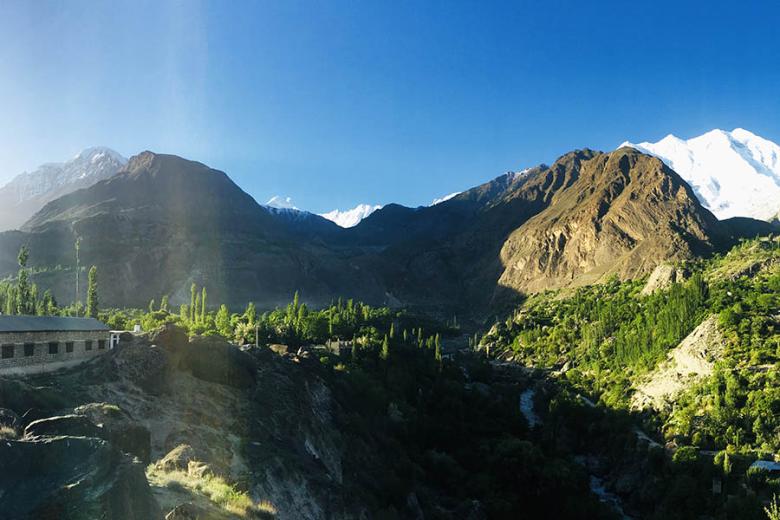
Trekking to Rakaposhi Base Camp
The trek was challenging at times. The trail is very steep to begin with, initially rising 183m on switchbacks and then easing until you reach Hakapun. After that, there’s a further steep climb for the next hour. I think I possibly made this more difficult for myself by eating too much of the superb lunch on offer at Hakapun.
The remainder of the climb then takes in the fantastic scenery of green pastured forests, and we met many local mountain people along the way, who always greeted us with a friendly smile. Towards the end of the trek, we climbed a set of steep switchbacks, which rewarded us with incredible views of the huge Minapin glacier. We then arrived at Rakaposhi Base Camp, where we spent the night.
The tented camp had fantastic views of Diran Peak at 7266m and Rakaposhi at 7,788m above level. The toilet facilities are basic at the Rakaposhi Base Camp, but that’s to be expected when you’re trekking at this altitude. On the flip side, the toilet does have 5-star views of the glacier!

Following the road to Fairy Meadows
The next morning, we walked on the glacier for an hour and then descended back to Minapin, which took roughly 3 hours, including a rest at Rakapun. After lunch, we travelled along the famous Karakorum Highway to Raikot Bridge to begin our journey to the Fairy Meadows.
In order to reach Fairy Meadows, you can choose to travel by jeep for 1 hour up to the trekking point, or you can do the first part of the journey by trekking, which adds roughly 2 extra hours to your overall trek. We travelled by jeep, and it was fantastic, if a little scary, climbing the steep mountain roads that hug the cliff edge. This jeep journey will not be for everyone, so if you prefer not to travel by road, I recommend hiking to the start of the trek.
The scenery along this journey was jaw-dropping. I’ve never seen so many different coloured mountains, ranging from red all the way to green. The terrain is surreal, like something you might expect to see on a different planet like Mars. It was a mind-blowing adventure.

Exploring Fairy Meadows
Once we reached Fairy Meadows, which took a further 3 hours on foot, it was almost nightfall and we stayed overnight in a lodge. I woke early the next morning to see clear skies and a superb view of the sun rising over the eastern peaks of Nanga Parbat from my lodge cabin.
We then began a 3-hour trek into Fairy Meadows, which is a summer pasture surrounded by beautiful pine forests and Nanga Parbat in the background. It is one of the most beautiful places I’ve visited in the world, and so peaceful and quiet.
Considering that this is one of the highlights of visiting Pakistan we only came across a few tourists on this trek. It felt like you we had this fantastic place to ourselves, which is so very rare these days. In fact, we never found ourselves surrounded by other tourists at any point during the trip. If you want to get off the beaten trek and have an authentic wilderness experience, get yourself to Pakistan. There are not many places left like this in the world.
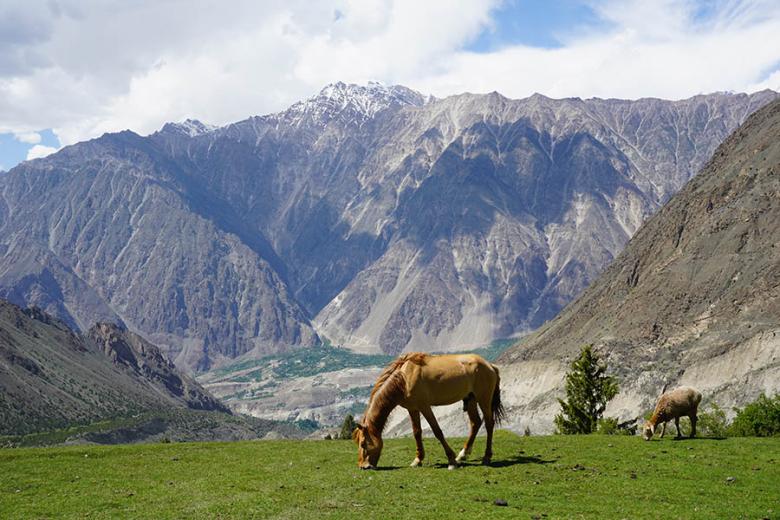
Staying in the Hunza Valley
After experiencing beautiful Rakaposhi and Fairy Meadows, we then spent the next 3 nights in the Hunza Valley. The Hunza Valley is in the northern part of the Gilgit-Baltistan region. It is surrounded by jaw-dropping mountains and the beautiful Hunza River flows right through the valley.
I immediately fell in love with the Hunza Valley and its beautiful cobbled old streets selling everything from dried fruit to hand-woven carpets. I can totally see why so many travellers on the Hippie Trail of the 1950s and 1960s would stay here for a few months or years on their overland journey from Europe to South East Asia.
We stayed at the famous Hunza Inn, which has the most magnificent views over the valley from the hotel restaurant. It has to be one of the best views in the world.
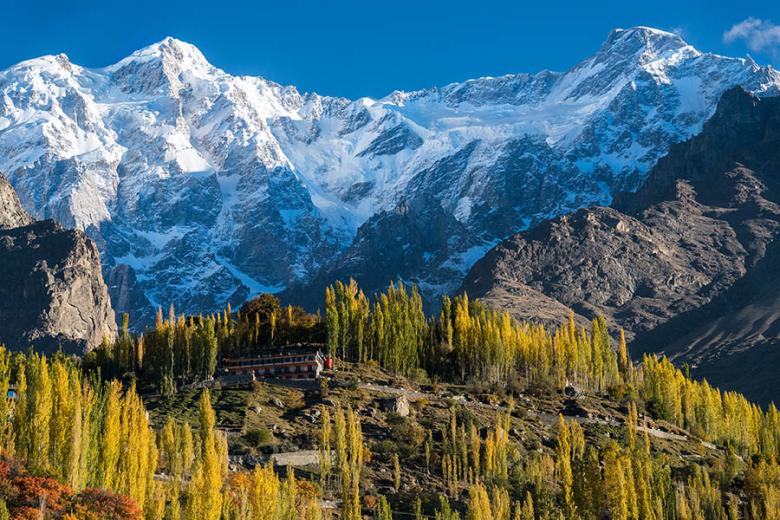
Hunza is a great place to relax after trekking, and you can also visit the famous Baltit Fort which takes you back over 700 years to explore the royal seat of Hunza. The Fort also has fantastic views over the Hunza Valley, so it’s definitely worth a visit.
Whilst in Hunza, I would also recommend visiting Attabad Lake. It’s a 1-hour journey from the Hunza Valley and you can combine it with a trip to the stunningly beautiful Passu Mountain range, located along the famous Karakoram highway.
Attabad Lake used to be a village of 6,000 people, but it’s been underwater since 2010 when a huge landslide blocked the Hunza Valley and created this 12-mile lake. We took a fantastic boat journey on the lake, with the Passu Mountains in the distance and the remote scenery reflected in the clear blue waters.

Braving Passu Suspension Bridge
Close to Passu, you can also walk over the famous Passu Suspension Bridge, which is not for the faint-hearted. You really need to hold on tight to the ropes and watch where you step as you try to navigate between the sparse planks with the Hunza River flowing fast below your feet.
Like the jeep journey to the Fairy Meadows, this was one of the highlights of my trip, however, this is real adventure and it’s part of the beauty of discovering and travelling off the normal beaten track. Be prepared to test your nerves and feel your adrenaline pumping!

Looking around Lahore
After exploring Baltistan and the Hunza Valley, we then returned to Islamabad by flight and stayed overnight before commencing our trip to Lahore the next day. Lahore is a 4-hour drive from Islamabad, however, if you wish to avoid this car journey, we can organise a domestic flight between these two cities.
Lahore was what I expected Islamabad to be like, a busy South Asian city with plenty going on. We visited the Old Town of Lahore on a day tour and spend some time in the Lahore Museum, which was a great experience. The museum has plenty of interesting artefacts and I really enjoyed the contemporary art section. I was totally captivated by the work of Sadequian, a famous Pakistani artist and calligrapher. I could spend hours looking at his fantastic work.

Watching the Wagah Border Ceremony
Lahore is located very close to the border with India, so we had the opportunity to experience the famous Wagah border closing ceremony between these two countries. Since watching it on TV with Michael Palin as a kid many years ago, I have always wanted to experience it for myself.
The ceremony did not disappoint, and the crowd screamed and shouted ever louder as their countrymen threw fists at the Indian soldiers before lowering the flags of both nations and closing the gates on the border between both countries. It was a brilliant experience and the perfect way to finish off my 2-week trip to Pakistan.

My thoughts about travelling in Pakistan
Whilst travelling in Gilgit-Baltistan, you’ll find truly unique and awe-inspiring views around every corner. It has the most amazing scenery I have ever experienced when travelling abroad. There’s no need to bring a book whilst travelling in Pakistan because the scenery out of the window will keep you mesmerised for the whole journey.
If you have visited India or Nepal, or you’re an experienced traveller wishing to experience somewhere truly off the beaten track, I cannot recommend Pakistan highly enough. It is such a rare and special place. I would recommend joining an organised tour of Pakistan, so that you make the most of your time away and get a real local insight into this amazing country. I travelled with a company called The Wander, and they exceeded my every expectation.
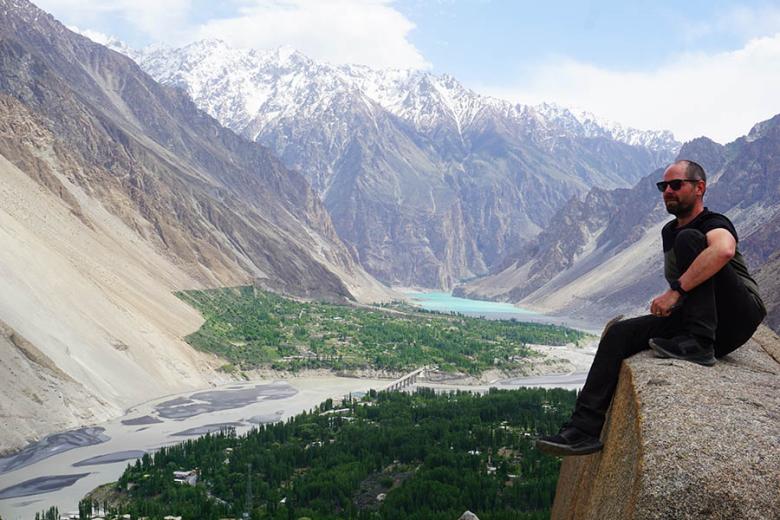
Tempted to plan a Pakistan trip?
We're experts at putting together extraordinary trips to extraordinary places. If you would like to set off on your own Pakistan adventure, you can call David directly on 01273 320578 or use our online form to request a quote. We looking forward to helping you plan your personal trip of a lifetime!

Gorilla trekking in Rwanda with a Tanzania safari
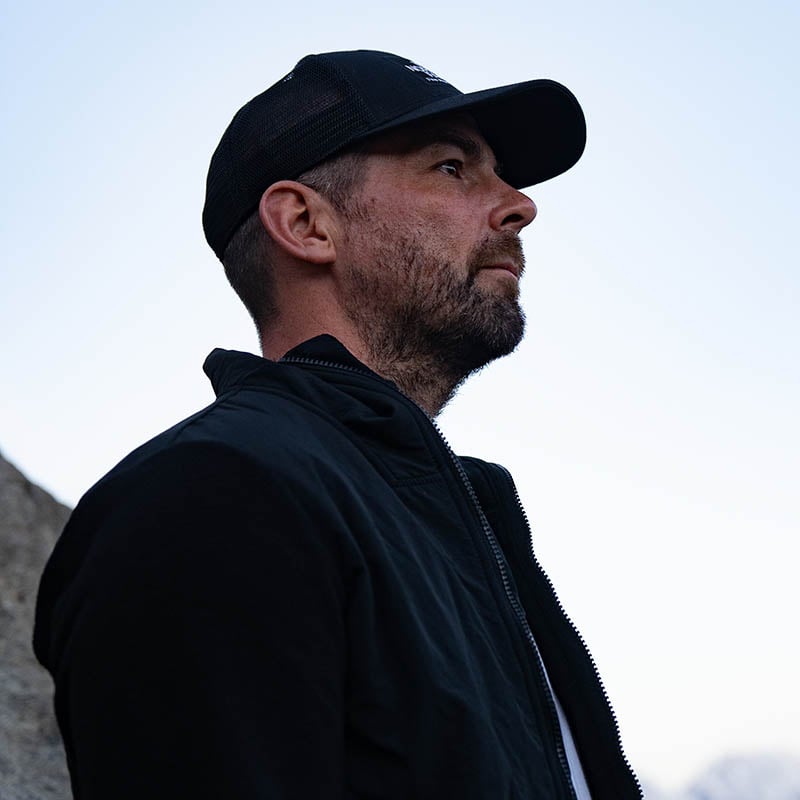
David Taylor
Senior Travel Consultant
at Travel Nation

Exploring Sarawak, Borneo: Kuching, Mulu caves & Bako National Park

David Taylor
Senior Travel Consultant
at Travel Nation

5 Route ideas for your New Zealand road trip

David Taylor
Senior Travel Consultant
at Travel Nation

About the author David Taylor
Senior Travel Consultant
David has travelled far and wide using his passion for photography to chronicle his many journeys, including lemurs in Madagascar, glaciers in Iceland, wild gorillas in Rwanda and stupas in Myanmar. He is an experienced traveller and understands how to combine off-the-beaten-track experiences with comfortable touring, to create a trip of a lifetime. With more than 15 years’ of industry experience he has worked in travel in both the UK and Australia. David joined Travel Nation in 2012 as a round the world specialist and is also one of our Business Class consultants.


